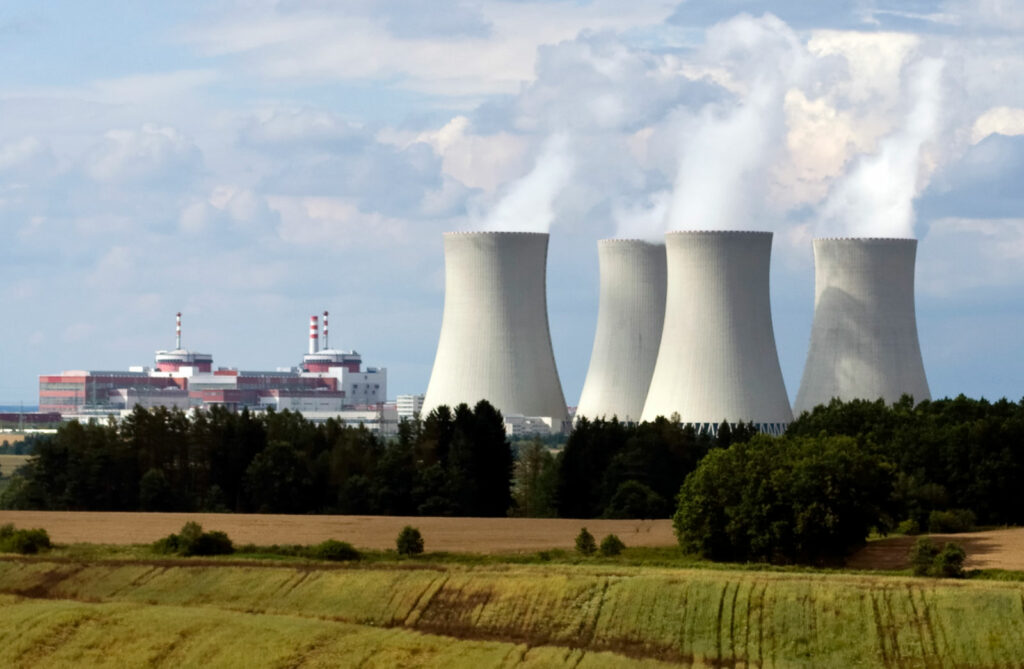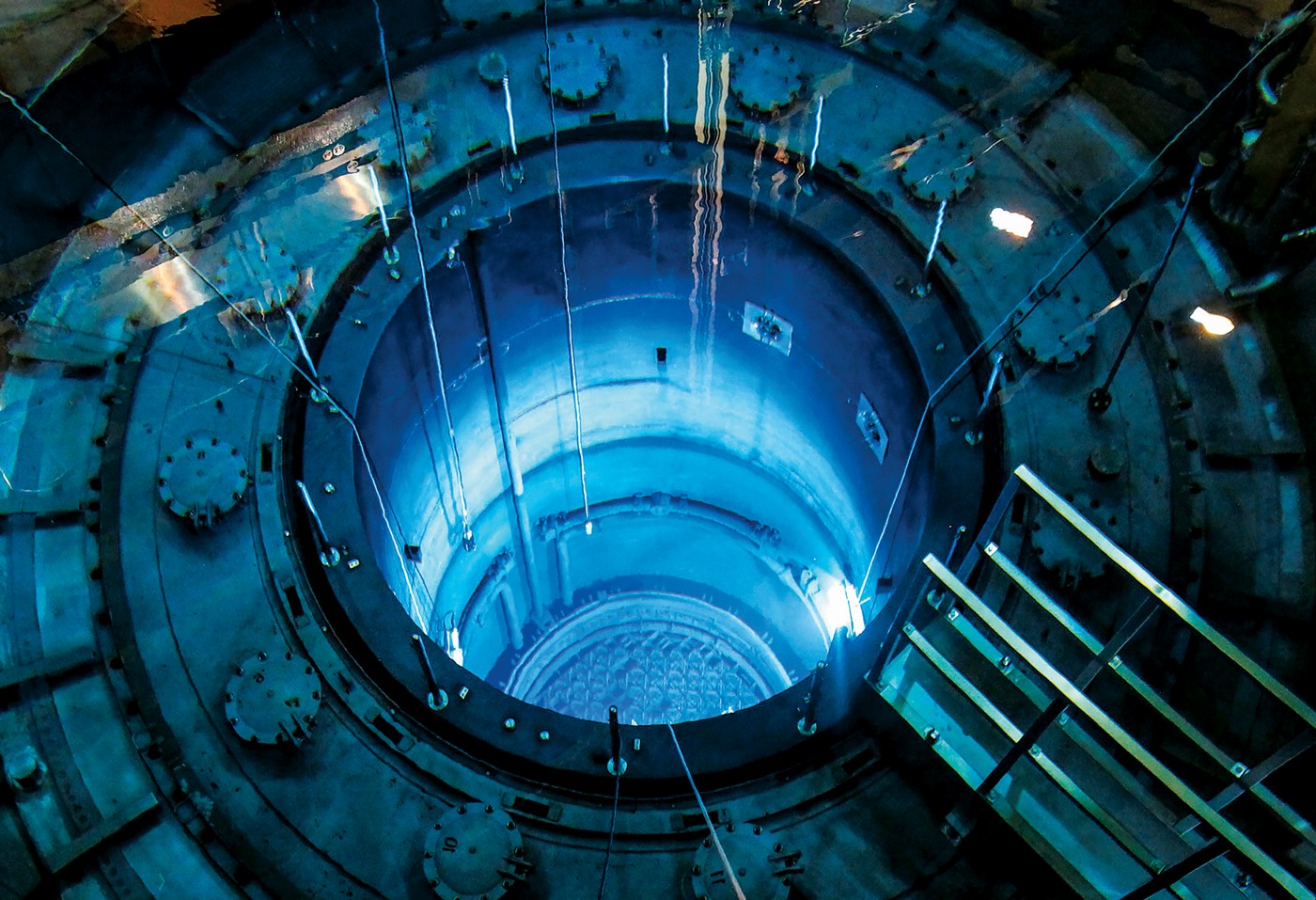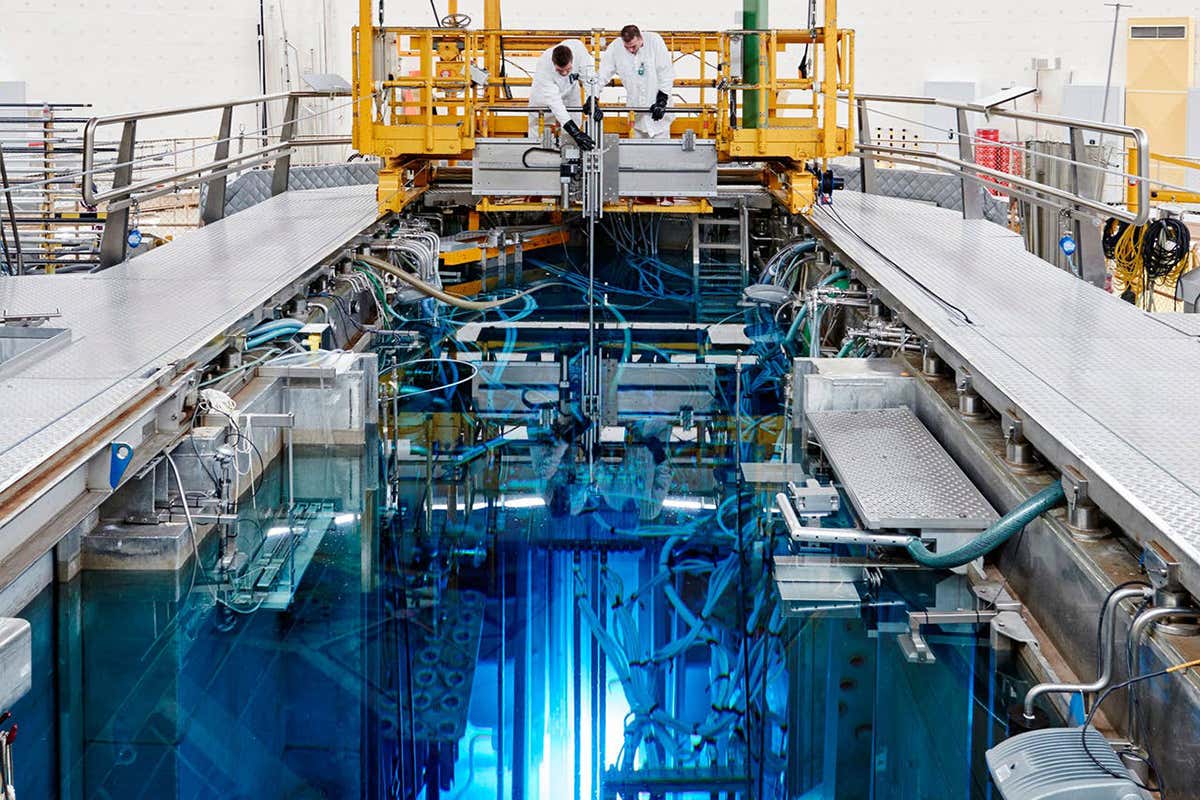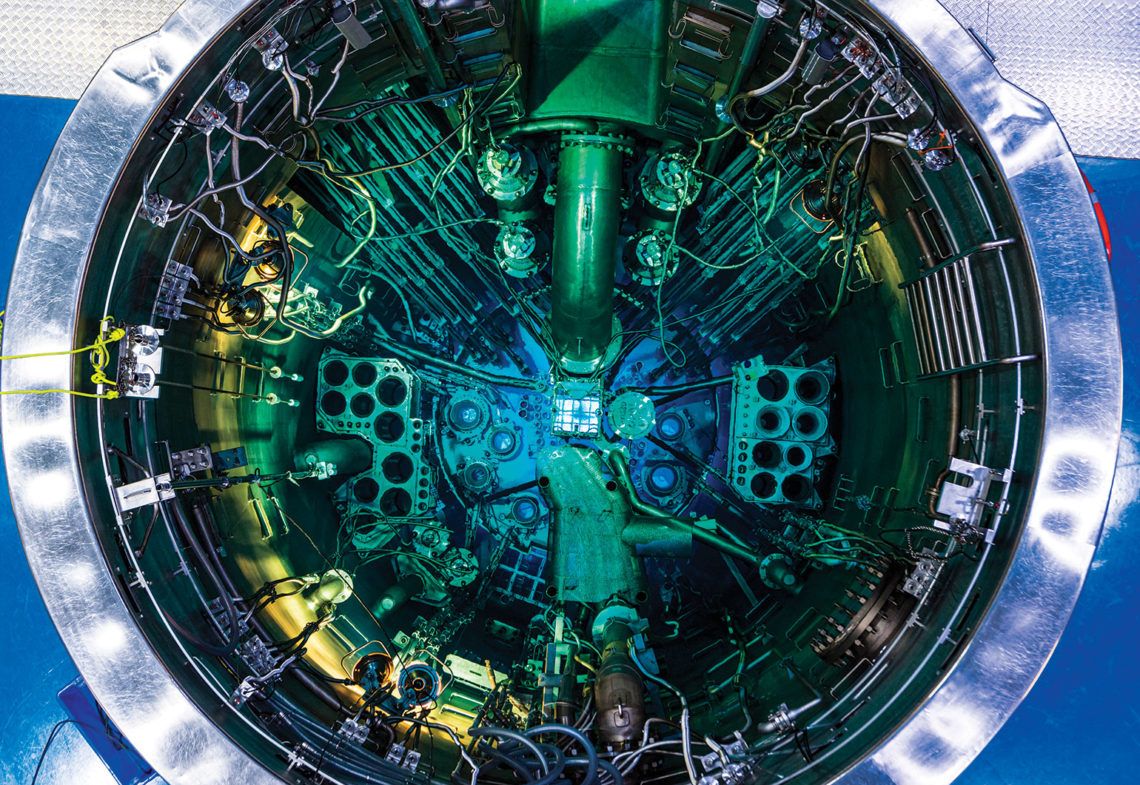Welcome to Linquip Blog. Today and in this article, we are going to have a look at the working principle of nuclear reactors and see how a nuclear reactor works. In the following, we are going to find out how does a nuclear reactor work in a nuclear power plant?
For those who are not familiar with some basic concepts of nuclear power and the nuclear reactor in the first place, we have prepared a very simple definition of nuclear power and reactor, and then we will talk about the working principle of a nuclear reactor and its operation.
Our team gathered all of the necessary information on this topic to eliminate the need for reading diverse content on other websites. Stay with us until the end to find the answer to your question on this topic. We have a long journey ahead of us, so take a deep breath, sit back, and keep reading this article until the end.
What Is Nuclear Power?
Nuclear energy or power is formed by splitting uranium or plutonium atoms through chain reactions in a nuclear reactor through a process called nuclear fission. The energy released from splitting the atoms is used to heat water into steam. This steam then turns into a turbine, which creates usable electricity. Researchers have recently discovered that thorium is another fuel that could be used for nuclear power. It’s already being used in countries like India and Russia.
What Is a Nuclear Reactor?
Nuclear reactors are fundamentally large kettles, which are used to heat water to produce enormous amounts of low-carbon electricity. They come in different sizes and shapes and can be powered by a variety of different fuels. A nuclear reactor is a site that can initiate, sustain and stop nuclear fission chain reactions in a controlled way, with adequate means to extract the generated heat. You can read more about the main components of a reactor below:
1. Fuel: The material, usually enriched uranium dioxide, where the fission reactions take place. It is used simultaneously as a source of energy and of neutrons to sustain the chain reaction. It is presented in a solid state in the form of cylindrical pills encapsulated into metallic rods a few meters long.
2. Moderator: Water that slows down the fast neutrons generated by fission, which leads to new fissions and the sustainment of the chain reaction.
3. Cooling water: The same water that induces the fissions as a moderator, which now serves to extract the heat generated by the fission reaction from the uranium in the fuel.
4. Control rods: The control elements in the reactor. They act as neutron absorbers. These rods are made of indium-cadmium or boron carbide and make it possible to constantly control the neutron population whilst keeping the reactor stable; they also make it possible to stop the reaction whenever necessary.
5. Shielding: It prevents the leak of radiations and neutrons from inside the reactor to the outside. Usually shielding is made up of concrete, steel, or lead.
6. Safety elements: All nuclear power plants have multiple safety systems to prevent the leak of radioactivity to the outside. These systems include the containment building.
How Does a Nuclear Reactor Work?
Now that we have reviewed the basic information and basic definitions of nuclear energy and the nuclear reactor, it is time to move on to the main point.
A nuclear power plant is an industrial site that generates electricity from nuclear power, released in the form of thermal energy through a nuclear fission chain reaction inside the vessel of a nuclear reactor. The main component of a nuclear power plant is the nuclear reactor, which contains the nuclear fuel (usually uranium) and has systems that make it possible to start, sustain and stop the nuclear reaction in a controlled manner. Just as conventional thermal power stations generate electricity by harnessing the thermal energy released from burning fossil fuels, nuclear reactors convert the energy released by controlled nuclear fission into thermal energy for further conversion to mechanical or electrical forms.
It is important to keep in mind that in nuclear fission the nuclei of heavy atoms are bombarded with neutrons and then decompose into smaller and lighter nuclei. When this happens,
They release the energy that binds the neutrons and protons that compose them, and then they emit two or three neutrons. These can produce more fissions as they interact with new heavy nuclei, which will then emit new neutrons and so on so that the reaction sustains itself. This multiplying effect is known as the nuclear fission chain reaction.
The fissioning of atoms in the chain reaction also releases a large amount of energy as heat. The generated heat is removed from the reactor by a circulating fluid, typically water. This heat can then be used to generate steam, which drives turbines for electricity production.
To ensure that nuclear reaction takes place at the right speed, reactors have systems that accelerate, slow, or shut down the nuclear reaction, and the heat it produces. This is normally done with control rods, which typically are made out of neutron-absorbing materials such as silver and boron.
Most of today’s reactors contain several hundred fuel assemblies, each having thousands of small pellets of uranium fuel. A single pellet contains as much energy as there is in one tonne of coal. A typical reactor requires about 27 tonnes of fresh fuel each year. In contrast, a coal power station of a similar size would require more than two-and-a-half million tonnes of coal to produce as much electricity.
If we want to summarize and simplify the operation of a nuclear reactor, it includes 5 stages:
1. The uranium fission takes place inside the nuclear reactor. It releases a large amount of energy that heats the coolant water circulating at very high pressure. This water is transported via the primary circuit to a heat exchanger (steam generator) that produces water steam.
2. This steam is transported to the generator-turbine set via a secondary circuit.
3. Once there, the vanes in the turbine move the alternator, and the mechanical energy is transformed into electricity.
4. When the water steam goes through the turbine it is sent to a condenser to cool off and become liquid water again.
5. The water is then transported to the new steam generator to become steam again inside a closed circuit.
How Does the New Generation of Nuclear Reactors Work?
Innovative entrepreneurs and startups are developing new types of reactors to be more efficient and flexible in operations, reach remote and developing areas, reduce and possibly even recycle waste, and even turn seawater into drinking water.
Advanced reactors include many types of reactors, including small modular reactors (SMRs), now in development. Several of these new designs do not use water for cooling; instead, they use other materials like liquid metal, molten salt, or helium to transfer heat to a separate supply of water and make steam.
SMRs are advanced reactors that produce 300 megawatts or less of electricity. They will be less costly to construct and can be built in factories and shipped to where they are needed, so they can help power remote areas or developing nations with carbon-free energy. SMRs also can scale in power output to meet electricity demand, making them ideal partners to support intermittent renewable energy sources.
Some advanced reactors will operate at higher temperatures or lower pressures than traditional nuclear reactors. They also will offer other applications like water desalination and hydrogen production. Other reactors will be very fuel efficient by producing less waste or by having extended fuel cycles and not having to stop and refuel for a decade or more.
Conclusion
The present article was an attempt to deliver all the essential information about “How Does a Nuclear Reactor Work?” we brought the basic definition of what Nuclear Power and Nuclear reactors are firstly and then we moved to the 5 stages of the working principle of nuclear reactors. In the end, we discussed how the new generation of nuclear reactors works.
If you have any opinion about nuclear reactors and their working principles, will be very glad to have your point of view in the comments on our website Linquip. Moreover, if you have any questions about this topic, you can sign up on our website and wait for our experts to answer your questions. Hope you enjoyed reading this article.
Buy Equipment or Ask for a Service
By using Linquip RFQ Service, you can expect to receive quotations from various suppliers across multiple industries and regions.
Click Here to Request a Quotation From Suppliers and Service Providers
Read More On Linquip
- Is Nuclear Energy Renewable? A Complete Answer
- What is a Continuous Stirred-Tank Reactor? Application and Working Principles
- Nuclear Power Advantages and Disadvantages: Comprehensive and Well-developed
- What is Breeder Reactor? Types and Applications
- Nuclear power plant diagram: A complete guide
- Ways to Conserve Energy: General and Practical Solutions for Saving Energy






